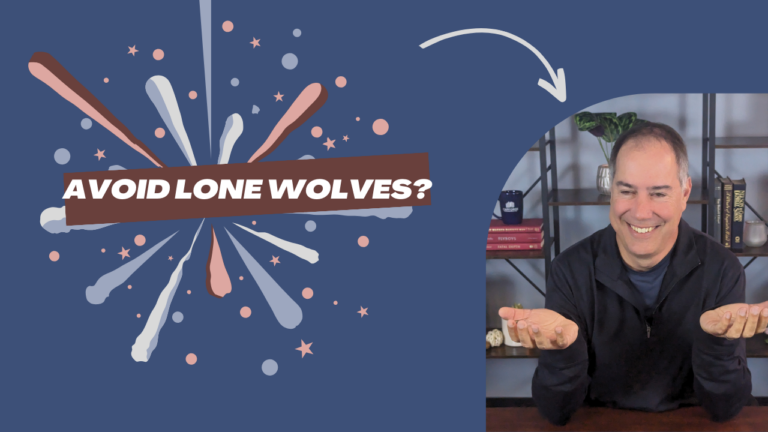When Growth Hurts Your Business – And How to Fix That!
As business owners we generally want our businesses to grow and consider growth to be a good thing! The bigger you get the more you can do, the more you make, and the more successful your business is considered by almost everyone.
But sometimes growth isn’t good for everyone. Sometimes growth is bad – for the customer.
My mom recently had her bathroom shower redone. The guy she hired was a referral from some friends and he came out to give her a quote and assured her he was going to be handling the whole job, even for the parts he didn’t directly do himself.
True to his word, he was there every day of the job from start to finish, including being there to supervise and help with the tiling, plumbing, and hot mopping portions of the job he brought other people in to do. He cleaned up at the end of each day and even took the trash cans out for her on trash day and brought them back the next day.
He was her single point of contact and managed the whole process. It was exactly the experience she wanted – to deal directly with the owner and the person who could resolve any problems or concerns.
Check out what else we’ve been up to!
- Matt Reviews: How Should You Do Product Research? (Short Video)
- Matt Reviews: Should You Use Other People’s Time and Money to Open a Business? (Short Video)
- Matt Reviews: Will These 5 Write-Offs Keep You From Paying Any Taxes? (Short Video)
- Business for Sale, Would I Buy It? | Online Jewelry Store (Short Video)
- How to Avoid E-Commerce Risk & Scale Your Business with Matt Remuzzi (Podcast)
From her standpoint, he had the perfect size business – big enough to do the job well but small enough to not have any layers between her and him.
It may not be the perfect size for him though. Of course, he may enjoy being a very small business and not having any employees to manage or anyone but himself to worry about supporting.
But the downsides for him are significant – if he stops working the income stops – whether for vacation, personal illness, family issues, or whatever else comes up. He also can never sell the business so he isn’t building any equity. He has to hope that jobs come to him in a manageable flow – not too many at once that he can’t take but then not have too many lulls where he isn’t working at all.
In my opinion, the best path is to choose to grow the business well beyond what one owner can do. But one of the many challenges in doing that is keeping even a much larger business still feeling like a small business for your customers.
There are many ways to do that but I’m going to focus on one today that you can think about and apply to your own business.
How to Make A Bigger Business Still Feel Like a Small Business
If you think about a big business like an airline, a phone company, or an online marketplace one of the immediate things you realize makes it different than dealing with a small business is the level of knowledge and empowerment a single individual has.
When you deal with a small business and you are speaking with the owner you know that person knows all there is to know about the business and can make a decision on the spot. If something needs to be fixed, a discount applied or a promise of a delivery date made, you know they can do so. There is no one they have to ask or no other department that is responsible for that. You know you are speaking with the highest authority.
On the other hand, with a large business, very often the person you are dealing with (if you can get anyone at all) has no insight into the info you are asking about and they cannot help solve your problem. They will refer you to another department and another one and no one you speak with is able to take action.
You may finally reach a manager and after telling your story for the fourth or fifth time they may tell you the “most they are authorized to do” is some trivial refund or offer to replace the thing you didn’t want in the first place. It’s extremely frustrating!
So if a small business is one where the owner can deal directly with each customer to give the best possible experience but you want to grow past the point where you as the owner deal with every customer, what can you do?
The solution is to monitor how you are growing and as things become more separated by different functions and departments (which pretty much has to happen to grow efficiently) you make sure the customers always have the shortest possible line of communication with someone who can actually solve their problem.
In practice, this means always having roles in the business for people who understand and can see into each stage of the customer’s interaction with the business and is also empowered to make decisions to solve that problem. Essentially someone who can act like the owner and solve problems directly like an owner would. This is something you can scale up as the business grows so each customer can still interact with someone “like an owner” who can see the whole picture and resolve issues directly.
Most businesses tend to lose out on this function as they grow but that also starts to hurt them. They seem more like a big business to the customers even though they aren’t nearly big enough to start ignoring customer concerns and alienating people.
The good news is if you are aware of it then you can organize and empower the business to solve it.
At that point, you’ll have the best of both worlds – a growing business that doesn’t require the owner to be hands-on with everything all the time but one that feels like that to the customers.
Homework on this – pretend you are a customer of your business and figure out how many steps, calls, emails, and requests it would take to reach someone who can solve a common kind of problem they might have. If the answer is “more than one step” then work on figuring out how to reduce that until you can get it to just one!








